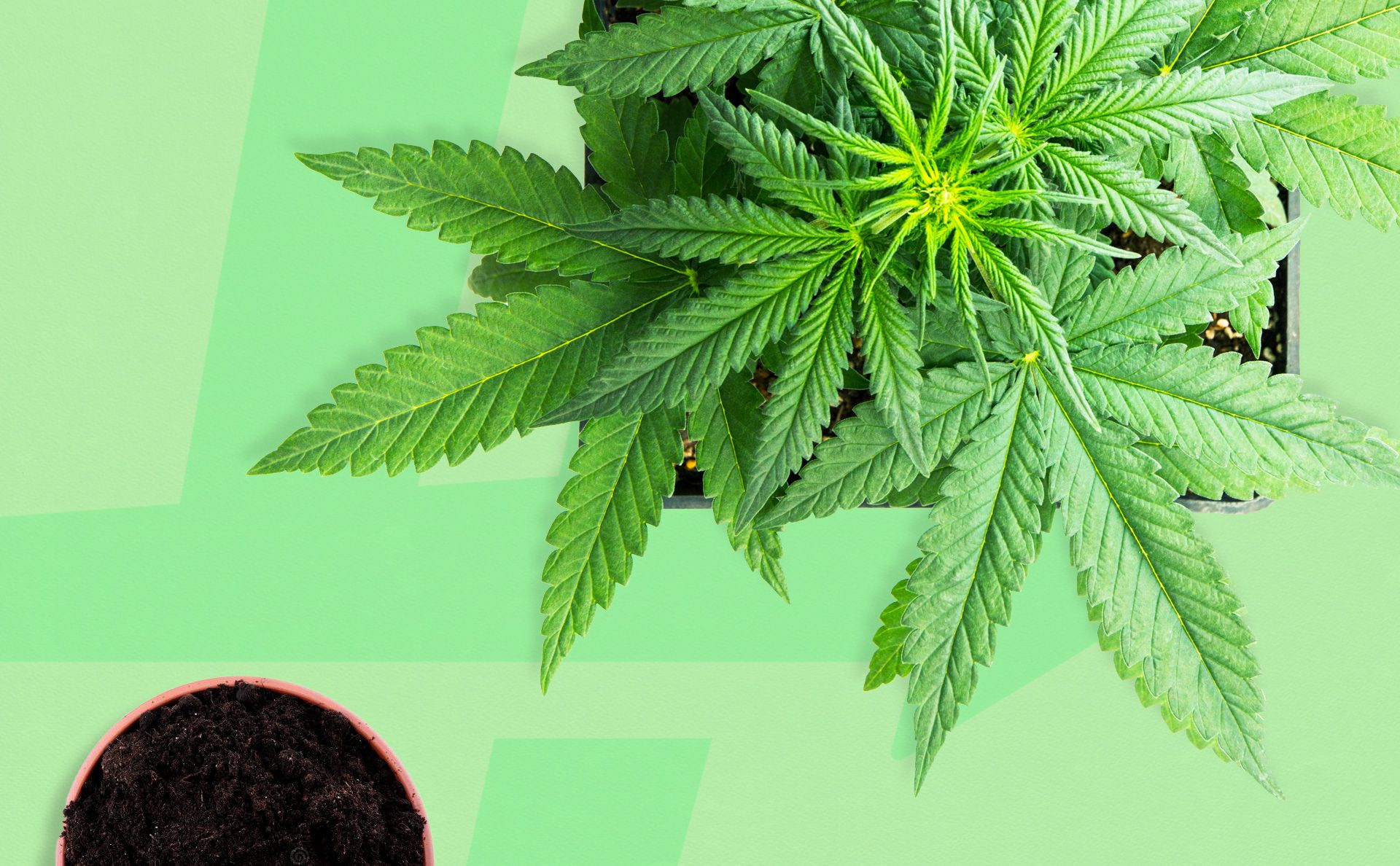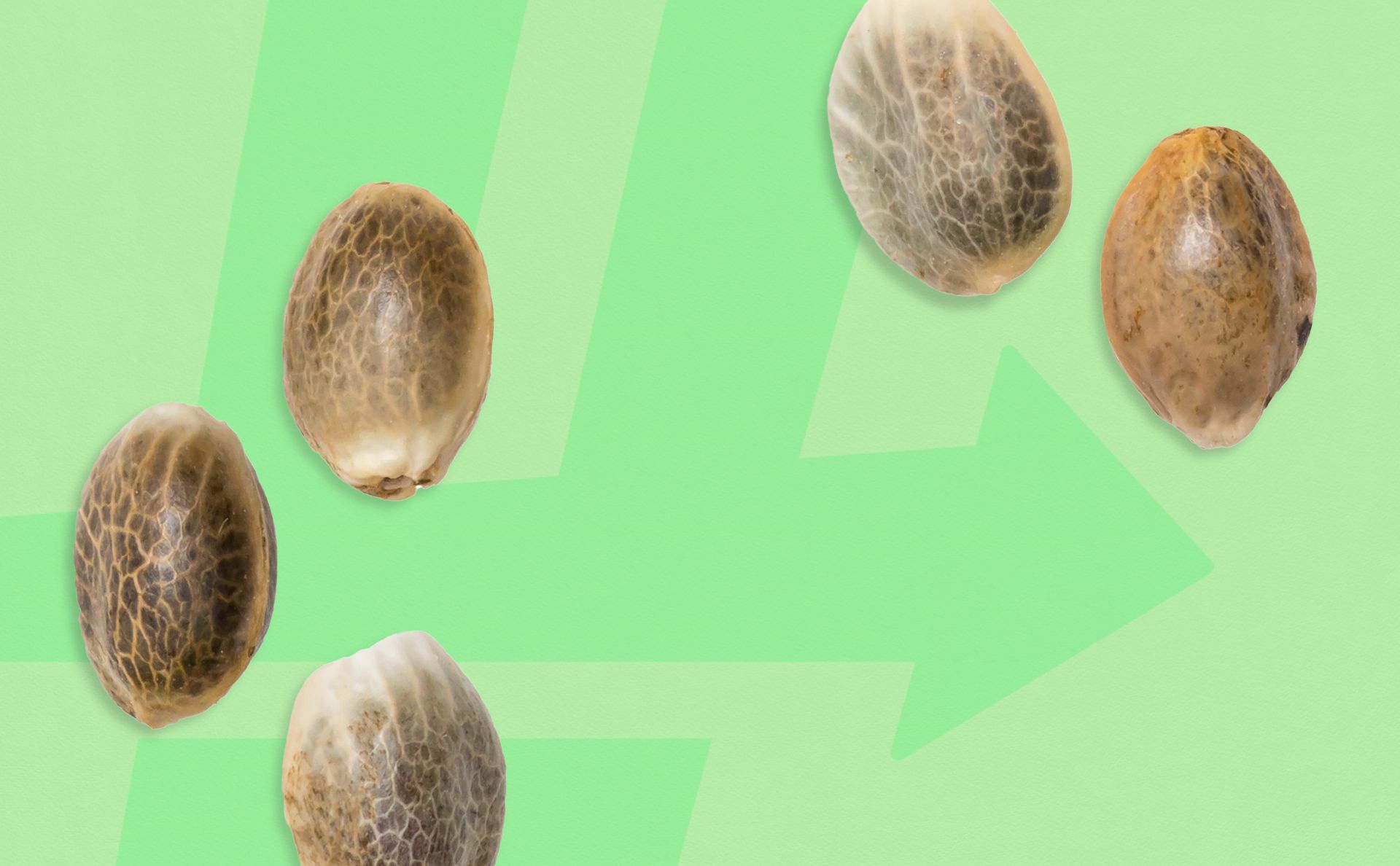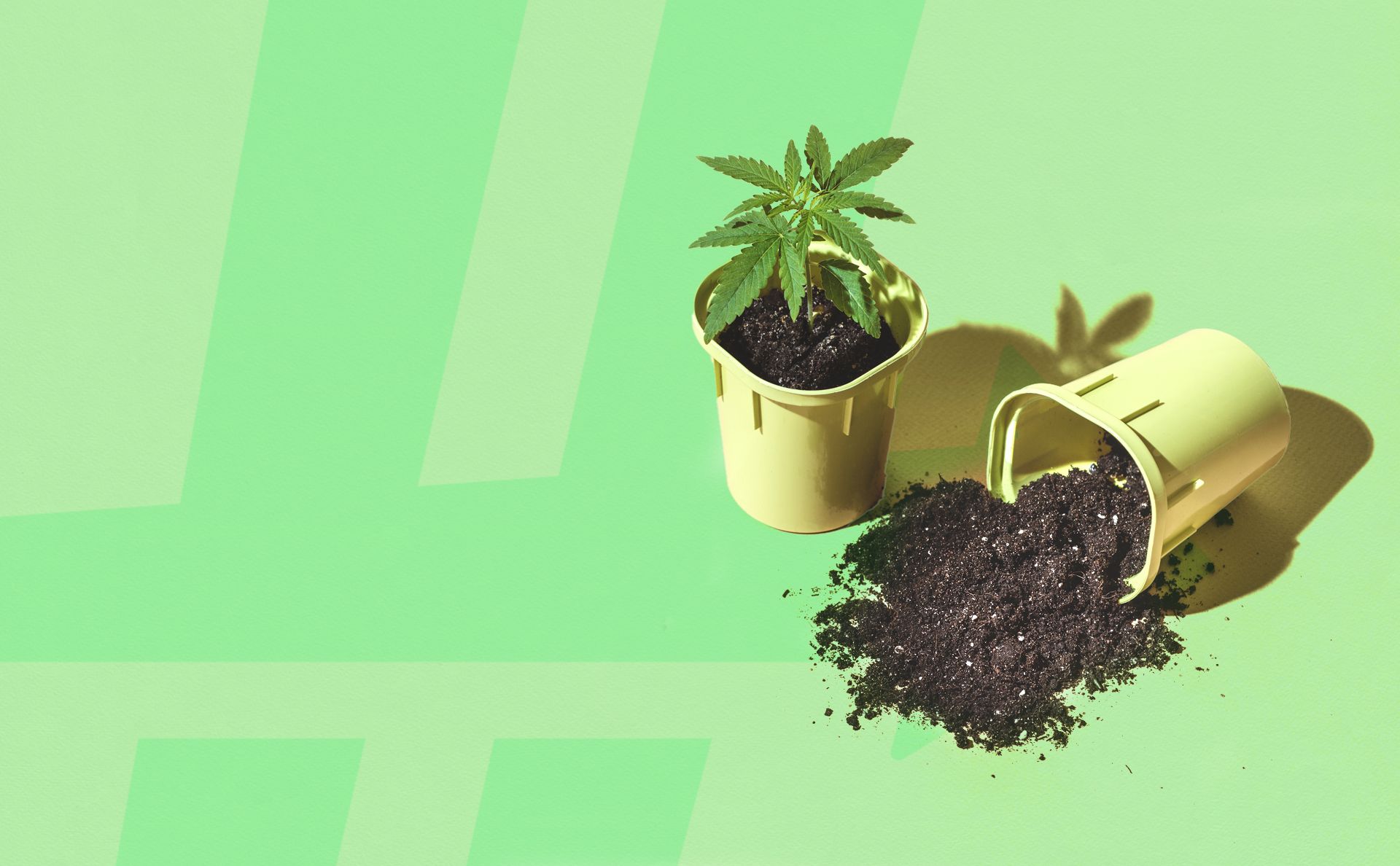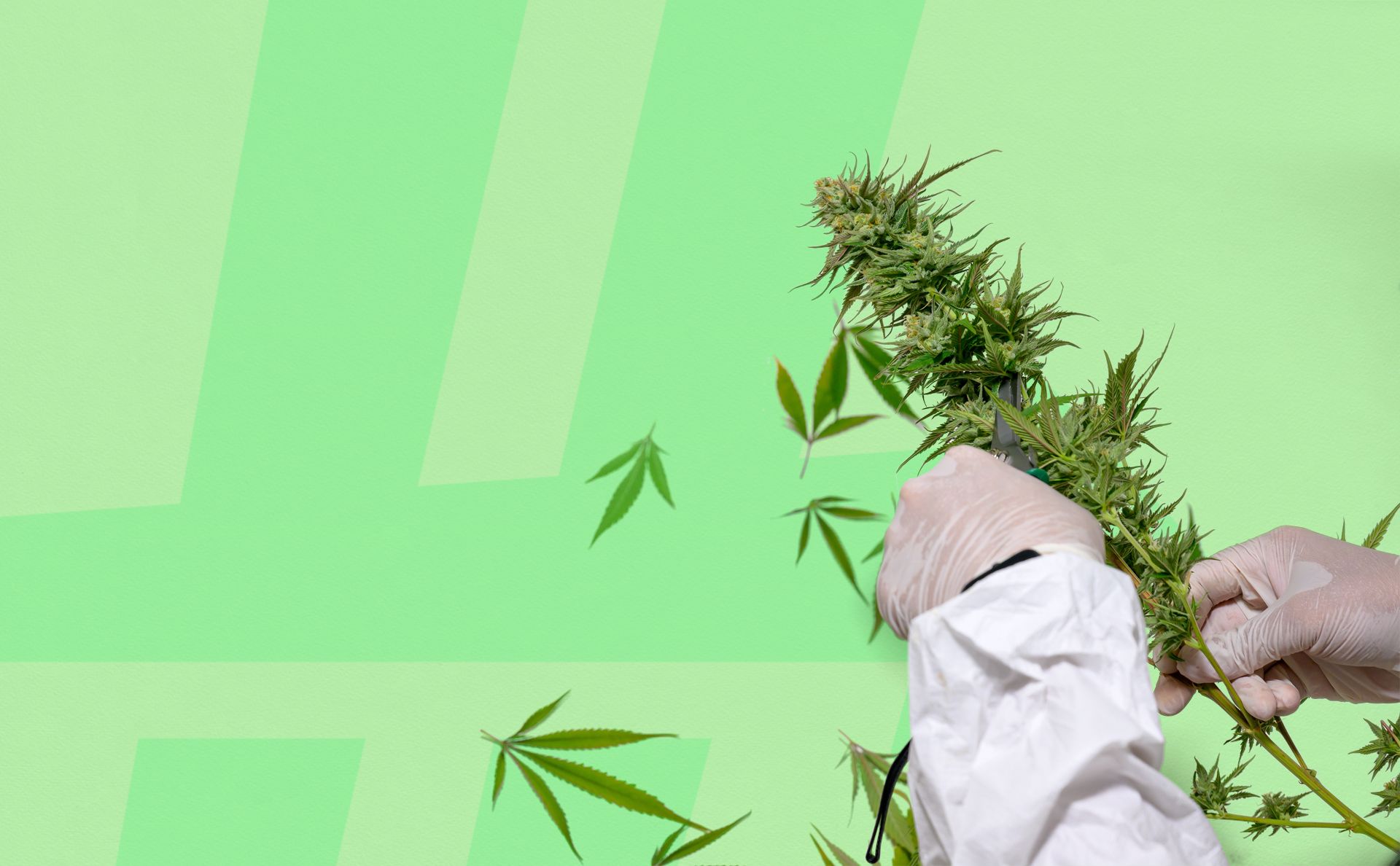Growing Cannabis At Home
Looking to get started growing your own cannabis at home? This chapter gives you an introduction to just that. We educate on indoor vs outdoor cultivation, phenotype hunting, stages of growth, and more.

Growing cannabis is a rewarding endeavor, as can be the case with growing any plant. While cannabis plants do grow naturally in the wild, getting the maximum potency and flavor does require some practice, patience, and know-how. This chapter will act as a jumping-off point for just that.
Commercial Grown vs Home Grown
We will focus on growing cannabis at home in this chapter. Properly licensed commercial cultivation facilities have access to equipment that most home-growers don’t: such as state-of-the-art LED lights, premium nutrients, and access to high-quality clones.
However, the two most important factors in any grow come down to good plant genetics and the right environment. If the best-funded commercial cultivation sites have questionable genetics or a poor growing environment, they will likely end up with a suboptimal product. With this in mind, let’s continue on about what you need to know for your home grow.
The Purpose of Your Home Cannabis Grow
Before you find your genetics and decide whether you want to grow from seed or clone, there are a few questions to ask yourself about optimizing your cultivation:
- First, do you live in a state with a medical program, or adult use? Check out our chapter on state-to-state laws if you don’t know. Each state also has its own laws around how many plants you may legally grow.
- Are you a caregiver? You will want to make your home grow and aligns with the needs of those for whom you care.
- Are you looking to just consume flower, or make edibles with the cannabis you grow? Consider your post-harvest consumption when finding genetics.
Genetics, Seeds, and Clones
There are thousands of cultivars out there, and it can be daunting to decide on which one is best for you. Our Phenotypes chapter can help shed some light on this and help you determine which route to go.
If you are looking to purchase seeds online, here are a few tips, be sure to find a reputable source that doesn’t engage in any black market activity. Non-germinated seeds can be purchased online, as this is the technicality that makes seeds legal for websites to sell them.

While growing from seed gives more options for experienced home growers, growing from clones may be the better option. Clones have become a go-to for many cultivators, even home growers. With clones, you don’t need to wait for seeds to pop and have already started growing, which cuts down a significant amount of time. Your state laws will determine whether you can purchase clones legally. And of course, you can always create your own after you have plants to take cuttings from.
Stages of Growth of Female Cannabis Plants
Here is the lifecycle of a cannabis plant:
- Germination – Germination is the process by which a plant embryo emerges from the seed coat. Germination, or sprouting, is the young new plant emerging from the seed. There are different methods to germinate, with the goal being to sprout seeds.
- Seedling – the plant’s infancy stage after germination, when plants develop cotyledon leaves. In botany terms, Cotyledon leaves are the first to appear from a germinating seed.
- Vegetative – cannabis plants build their foundation in this stage. During the Vegetative Stage, plants extend their roots while growing their branches, stems, stalks, and fan leaves.
- Flowering – is the best part of the growing process according to most cultivators. In this stage, the female cannabis plants begin producing flower. Male plants produce flowers as well, they are just typically made of pollen sacs instead of buds.
Environment
Aside from genetics, your environment is the most critical component of any grow. Irrelevant of what lights, medium, or fertilizer you use, your environment will be the biggest deciding factor in the success of your home grow.
Two important elements of your growing environment are the humidity and the amount of available space. Another element is whether you choose to grow indoors or outdoors.
If your environment is not ideal, flowering can be a challenge following a suboptimal vegetative state. Lower-quality environments can lead to poor plant health, diseases, pest issues, pathogens, and powdery mildew. This is why having a solid environment cannot be understated. Perhaps the biggest impact on your growing environment is whether you choose to grow indoors or outdoors.
Indoor vs Outdoor
While many cannabis consumers and cultivators will tell you differently, growing indoors or outdoors is not necessarily better than the other. Like anything in life, there are pros and cons to each.
First, if you want to grow outdoors, you must have the available property and land to do so. You must also have the willingness to spend a lot of time outside. Growing cannabis requires a good amount of care and attention. You may have to spend a lot of time outside in the hot sun while your plants are growing big and tall in the summer.
In addition, growing outdoors requires you to be thoughtful of your surroundings and neighbors. If you’re nearby farmland that uses traditional agricultural chemicals that cannabis cannot, this could present a problem. Old farmland soil may have absorbed heavy metals from old agricultural techniques from years past. Outdoor growing is also susceptible to wind drifts and patterns.
Few, if any of the above outdoor concerns exist inside, as you have much more control inside. However, this control comes at an obvious cost. Growing outside, the sun is your LED light. Indoors, even small grow spaces can add a hundred dollars or more to your monthly electric bill. Additionally, indoor grows require multiple fans to develop stalk rigidity and optimal plant health, which also adds to the cost of your electric bill.
Grow Medium
There are many different types of cannabis grow mediums: from traditional soil to rock wool, to coco or perlite and hydroponics. Like deciding whether to grow indoors or out, deciding on the best growing medium requires you to weigh the pros and cons.

An important thing for new growers to keep in mind is that if you are using different brands of growing medium there will be differences between them. Each grow medium manufacturer will have nuances that may impact your plants and ultimately your harvest.
Lights
For indoor growing, the quality of your lights will impact the health of your plants and will affect your yield and potency. Some examples of grow lights are:
- HID (high-intensity discharge)
- Plasma
- LED (light-emitting diode)
Newer, quality LED lights tend to throw off less heat than their HID and plasma counterparts. It is important to choose LED lights that are designed for cultivation.
Nutrients
Cannabis grows naturally in many parts of the world, as a weed, and has done so for centuries. However, it won't grow to be as beautiful as it can be. Whether you decide on granular or liquid nutrients, don’t skip on the quality of your nutrients. Home growers should do their due diligence and spend a little more on higher-quality nutrients.
Several trusted cannabis industry publications have been reporting on a fertilizer shortage, which is something for home growers to be aware of. Many commercial grow facilities are purchasing up to a year of supplies in preparation for shortages. While this probably won’t impact your home grow, it is something to keep in mind.
How to Tell Female From Male
Once you’ve decided on indoor vs outdoor, your ideal growing environment, medium, nutrients, and so on, you’ll have to separate male from female plants. This is because males do not produce cannabis flower, and therefore need to be removed so they don’t pollinate females and prevent them from developing buds. Here are a few indicators of male plants:
- Male plants are taller and seedier than females.
- Males have fewer leaves than their female counterparts.
- Male plants have pollen sacks and female plants have pistils.
- Females have more leaves and are thicker and more visually appealing than male plants.
Light and Dark Cycle
Cannabis grows on a schedule of light and dark. For the vegetative state, this typically requires 18 hours of light in a 24-hour period. During flowering, the light and dark cycle is generally 12 hours on and 12 hours off. For indoor grows, you can add up in your head how much high-powered lights will cost to run for 12 hours a day for 3-4 months.
Pruning and Shaping Plants
Also called topping, shaping is an important part of the homegrown cannabis process. Shaping and pruning your plants will help them have better access to lights and grow more evenly, which will help increase your plant’s health and eventual harvest.
Harvesting
As you can see, growing cannabis is rewarding, but there is a decent amount of work involved for the uninitiated. While the work is not yet done, now comes the fun part, which is harvesting. When determining when your plants are ready to harvest, their trichomes are a good indication. If they turn a brownish red, they could be ready to harvest. A good rule of thumb: clear trichomes are not ready, milky trichomes are starting to ripen, and amber-colored trichomes are ready to harvest.
We recommend purchasing a microscope from a home improvement or hydroponics store to inspect the trichomes up close. Harvesting too early can mean less potency and harsh buds with less flavor than if they were allowed to ripen. Typically, cannabis plants spend 7-9 weeks in their flowering stage. Some cultivars take longer, others will be shorter. There is no exact science, similar to removing meat from a heating source without using an internal thermometer to check doneness.

Once you’ve determined your plants are in fact ready for harvest, be sure to stock up on rubber gloves. Always wear gloves whenever handling any cannabis plant, whether you’re just cutting down, trimming away leaves and buds, and so on. Oils in your skin can degrade compounds like cannabinoids and terpenes, so always glove up when handling your buds.
Drying and Curing
Now that the harvest is finished, there is still a bit of time to wait. Freshly harvested cannabis needs time to dry and cure. But have no fear, because this process can only take two more weeks or so, depending on your cultivar. Be patient with this final step of the process, because it will impact the potency, flavor, and smoothness of your flower.
Curing means drawing moisture out of a substance by the process of osmosis. Drying the plants in open air removes the extra moisture, and curing preserves the flavors and aromas of the finished product. The practice of curing is common in food preparation as well as cannabis cultivation. For more in-depth information on the drying and curing process, be sure to check out our blog article on the matter.
What We Learned: Growing Cannabis At Home
As with anything cannabis consumption, what makes sense for you as a grower and individual will take time to learn, perfect and understand. It comes down to preferences and what you think works best for your home grow. Here’s what we learned in our Growing at Cannabis Home chapter:
- Aside from genetics, your environment is the most critical component of any grow. Irrelevant of what lights, medium, or fertilizer you use, your environment will be the biggest deciding factor in the success of your home grow.
- Before you grow, learn your state cannabis laws and determine your purpose for growing: medical or adult use, as a caregiver, and so on.
- The four stages of growth of a cannabis plant are germination, seedling, vegetative, and flower.
- Growing indoors can cost more to run lights, but gives you more control. Outdoor can cost less but gives you much less control over your grow.
- Males do not produce cannabis flower, and therefore need to be removed so they don’t pollinate females and prevent them from developing buds. There are distinct characteristics between males vs females that will tell you how to separate the two.
- Plants grow on a light cycle that varies between environment and cultivar, but vegetative plants typically need 4-6 hours more light per day than flowering.
Learning how to grow cannabis at home can be rewarding for any consumer: from the canna-curious to the expert, lifelong advocate of plant medicine. Now that we’ve covered the basics of growing cannabis at home, next we’ll dive into genetics and phenotypes. Answer the question below and let's dive into learning about Phenotypes.
Citations
- RX Green Technologies: Cannabis Cultivation Technical Papershttps://www.rxgreentechnologies.com/knowledge/technical-papers/
- RX Green Technologies: Stages of Growth Feed Charthttps://www.rxgreentechnologies.com/feed-charts/
- MJ Biz Daily: Fertilizer Shortagehttps://mjbizdaily.com/ukraine-war-supply-chain-woes-cause-cannabis-fertilizer-shortage-increased-costs/?utm_medium=email&utm_source=newsletter&utm_campaign=MJD_20220526_NEWS_Daily
Test your knowledge, track your progress and earn your badge.
Aside from genetics, what is the most critical component of any grow?